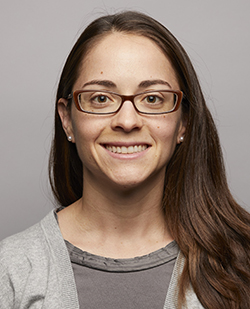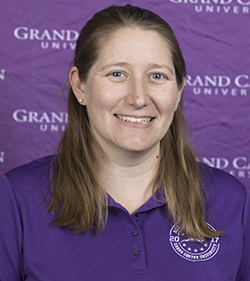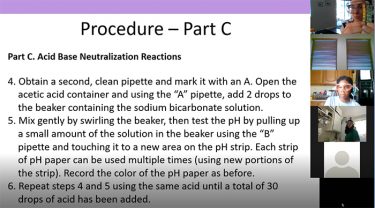
By Lana Sweeten-Shults
GCU News Bureau
Home is where the heart is. But it’s also where the goggles and graduated cylinders are this summer, at least in Dr. Kimberly Horsley’s introductory chemistry class, CHM-113.
The Grand Canyon University instructor wanted to see if students who were distance-learning in response to the coronavirus could do their chemistry lab experiments remotely from home, and COVID-19 presented a unique opportunity to test the at-home-lab-experiment waters.
Universities that offer online science courses usually bring students to campus for a residency at some point to complete their lab work. So creating at-home labs seemed to be an intriguing option that didn't involve the additional expense of a residency.

“Usually, we’re working with safe chemicals, like saltwater solutions, so I thought, ‘Let’s try this. There’s no reason they can’t do that in the kitchen,” Horsley said.
The idea far outweighed the other option, which was not to offer the labs at all, and that wouldn’t be good for students who wanted to take – or retake -- the course so they could progress in their studies and keep on track with their graduation goals.
While converting lectures to an online environment is one thing, “Labs are really difficult to do remotely,” said Horsley. “In a lab you have safety issues because of the chemicals and actually working with them, and then you have disposal issues. What do you do with these chemicals once you’re done?”
Some colleagues even told her, “It can’t be done.”
“But I wanted to know, ‘CAN it be done?’” she said.
The first step was to break down the course into the essentials: “What are the important things students need to get out of CHM-113, and how can I deliver that?” Horsley wondered.
That’s when she approached the College of Science, Engineering and Technology’s lab staff about creating lab kits students could use remotely.
“At the drop of a hat, they were like, ‘Let’s do this,’” Horsley said.

“It was a little intimidating at first because it was the first time we had done something like this,” CSET Lab Manager Teresa Bohman said. “We hadn’t worked with instructors on any type of online-delivery format before.”
Her team had a big challenge: to put together these lab kits in just two weeks and mail them to the dozen or so students taking the course before the first summer session began. The team, which included Lab Supervisor John Long-Breininger and lab technicians Autumn Jameson and Stacy Jeffeyrs, drove around town to multiple stores to find supplies.
“Yeast was a particular challenge,” said Bohman, whose team wanted to incorporate materials that could be used multiple times in various experiments. They also had to consider cost-effectiveness.
Bohman said one of the most important considerations was safety – recommending chemical alternates, and safely packaging chemicals and glassware for shipment.
Then they had to track down a postal carrier on a Saturday to get kits shipped as soon as possible.
“A positive student experience is very important to our team, and being able to assist in this way was a nice opportunity to try something new,” Bohman said.
Not that online lab experiences are anything new. Several vendors, such as Labster, offer virtual labs and lab kits.
“We just had an opportunity to do it more efficiently this time around,” Assistant Dean of Science Dr. Jon Valla said. “But it’s things like this (the lab kits) that allow us to carry on in this difficult environment. We can still offer courses that provide nearly the same high-level experience for students so that they still gain the crucial critical-thinking skills -- and some critical hands-on skills -- they need.”
Being forward-looking when it comes to virtual lab possibilities isn’t new, either, for CSET. The college has been tracking the development of virtual lab options, and occasionally testing those options, in the classroom for at least a decade.
“We have seen a lot of advancement in this area, especially in online simulation development, including augmented reality and virtual reality. The big challenges have always been fidelity to the traditional experience and keeping the experience high-level enough to drive the critical thinking that makes these activities so important,” Valla said.

GCU’s students conducted their chemistry labs from home during their Zoom class meeting time and were able to work on five of the nine labs included in the course.
“They did a portion or all of it remotely using these kits,” Horsley said.
In one lab, for example, students made a calibration curve of density vs. mass percent of a sodium chloride (salt) solution.
“We did A LOT of work with vinegar and baking soda,” Horsley said. “We did that reaction three or four times and looked at different aspects of the chemistry.”
Environmental science major Elizabeth Randolph, who's at home in Albuquerque, N.M., wanted to take CHM-113 over the summer to free up her fall schedule, when she'll be taking several lab-heavy courses.
She performed chemistry experiments from her kitchen, using the kits GCU's lab team mailed to her. Her favorite experiment: watching the colors change as a dye solution was diluted.
What was helpful was being able to carry out the labs at the same time her classmates did on Zoom. They were able to see each other, ask questions and get feedback from one another even though they might not have been in the same room.
"I think it was very similar," she said of performing the labs from home compared from doing them in a science lab. "It was really the same concept. I felt it was done really well."
Horsley sees these remote, in-home labs as something feasible for smaller, introductory classes. But to do this on a large-scale level – some 700 students take CHM-113 on campus per semester – would be impossible with the current set-up, she said, considering the cost and the logistics.
Then there are the upper-division chemistry classes, which present even more challenges than introductory courses when it comes to more advanced experiments and dealing with safety and disposal issues associated with the chemicals used.
“You can pick chemicals to be safe a lot of times -- but not every time,” Horsley said.
She also doesn’t see virtual or online labs replacing in-person labs altogether.
“In the lab, you can make mistakes,” she said, and making those mistakes is a good thing, particularly in a safe environment such as a traditional lab.
That in-person, in-lab experience, mistakes and all, is one of the best ways to learn, she said.
“Being able to send kits to students and enable them to continue their coursework online pushes the boundaries for online science education in the right direction,” said Program Director for Sciences Dr. Bina Vanmali, who noted how expanding online access to science education means increasing the country’s STEM-educated workforce, which is in short supply.
Valla sees a mix of hands-on activities, such as these at-home chemistry lab experiences, coupled with augmented reality and virtual reality as the next wave in science education – an ideal mix that “can allow students to sample activities they may not even be able to do in an on-ground lab.”
Like the at-home labs, it’s yet another intriguing idea.
GCU senior writer Lana Sweeten-Shults can be reached at [email protected] or at 602-639-7901.
***
Related content:
GCU Today: Science course dances to beat of different drummer
GCU Today: GCU STEM camps balance youths’ summer equation
GCU Today: Anatomy duo muscles into distance learning















